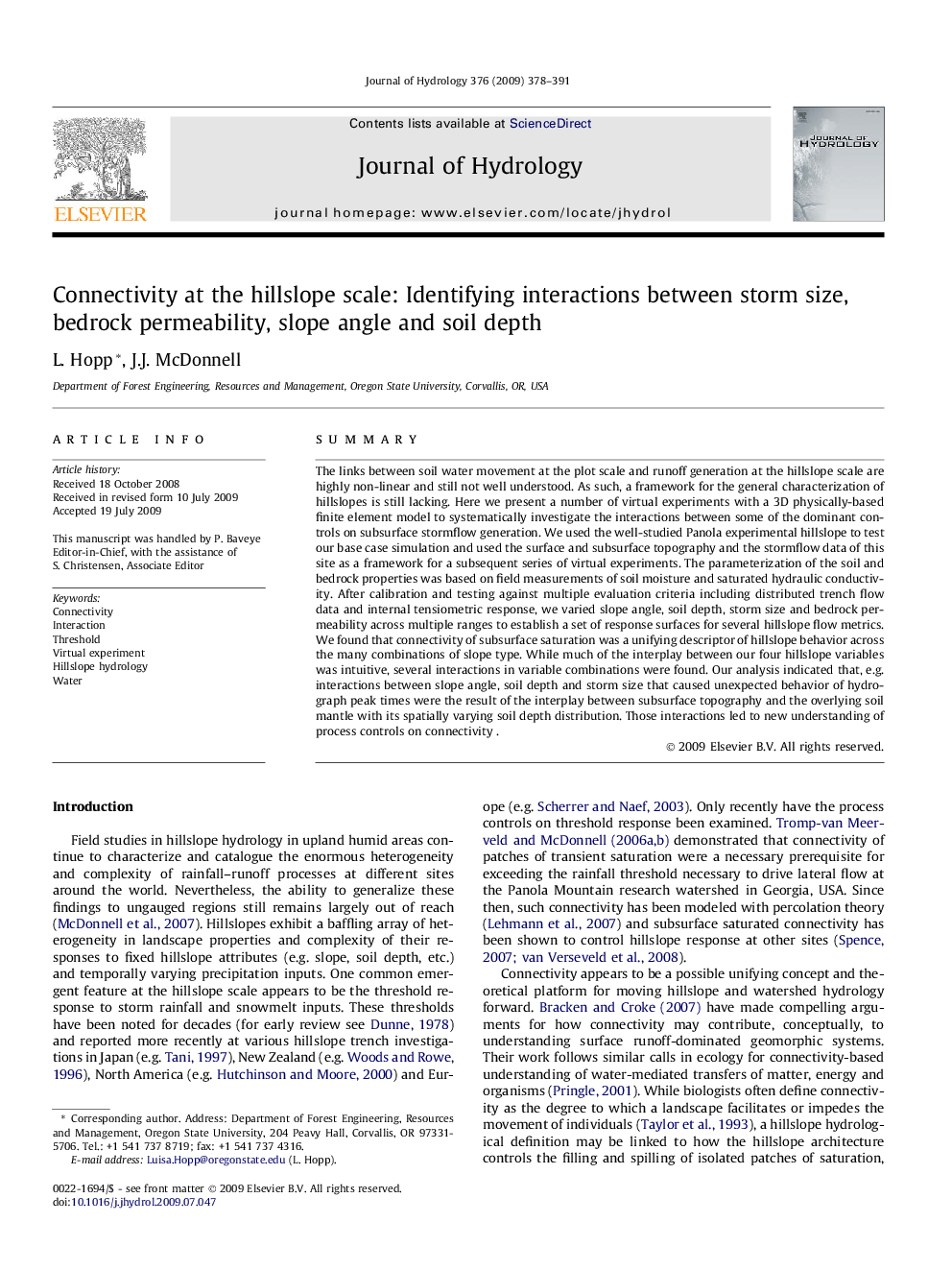| Article ID | Journal | Published Year | Pages | File Type |
|---|---|---|---|---|
| 4578605 | Journal of Hydrology | 2009 | 14 Pages |
SummaryThe links between soil water movement at the plot scale and runoff generation at the hillslope scale are highly non-linear and still not well understood. As such, a framework for the general characterization of hillslopes is still lacking. Here we present a number of virtual experiments with a 3D physically-based finite element model to systematically investigate the interactions between some of the dominant controls on subsurface stormflow generation. We used the well-studied Panola experimental hillslope to test our base case simulation and used the surface and subsurface topography and the stormflow data of this site as a framework for a subsequent series of virtual experiments. The parameterization of the soil and bedrock properties was based on field measurements of soil moisture and saturated hydraulic conductivity. After calibration and testing against multiple evaluation criteria including distributed trench flow data and internal tensiometric response, we varied slope angle, soil depth, storm size and bedrock permeability across multiple ranges to establish a set of response surfaces for several hillslope flow metrics. We found that connectivity of subsurface saturation was a unifying descriptor of hillslope behavior across the many combinations of slope type. While much of the interplay between our four hillslope variables was intuitive, several interactions in variable combinations were found. Our analysis indicated that, e.g. interactions between slope angle, soil depth and storm size that caused unexpected behavior of hydrograph peak times were the result of the interplay between subsurface topography and the overlying soil mantle with its spatially varying soil depth distribution. Those interactions led to new understanding of process controls on connectivity .
